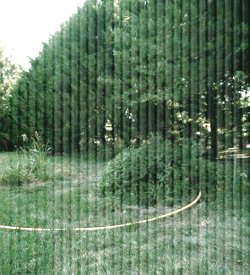 This
is something you might not be able to do if you live within city limits.
There are usually restrictions on using gray water, or water that come
off the washing machine or bath water. We live outside city limits so it
isn't a problem with us. Of course, this is already done in the country,
to an extent, with the use of septic tank and lateral systems. Funneling
extra water to other parts of the yard can be done in this manner. Using
a soap that breaks down over night is recommended and can be purchased.
However, you will need to search for these. This
is something you might not be able to do if you live within city limits.
There are usually restrictions on using gray water, or water that come
off the washing machine or bath water. We live outside city limits so it
isn't a problem with us. Of course, this is already done in the country,
to an extent, with the use of septic tank and lateral systems. Funneling
extra water to other parts of the yard can be done in this manner. Using
a soap that breaks down over night is recommended and can be purchased.
However, you will need to search for these.
Flexible PVC pipe, one and one quarter
inch can be purchased at the builder's supply or at a plumbing supply.
One simply fits the drain pipe off the washing machine down into the PVC
pipe and directs it to wherever it is needed the most. In this case, the
quince bush bed.
A man originally from Mexico designed and
set our beds in strategic places in order to catch and slow the downward
path of the rain water. With a pick he dug these beds and established
organic material there. Each year it is just a matter of stacking mulch
or adding organic fertilizer to the bed. We have used them for every
possible plant, annual, perenials, even a bush like this quince bush.
One of the beds hold what we call winter onions, a variety of onions who
have seeds off the top which drop and reseed themselves to grow through
most of the winter. They are up early in the spring from the dropped
bulb also. These onions were an important part of the pioneers diet
since they contain healing sulfur and vitamin C, along with other
vitamins. Rather than trying to "farm" the whole acre these
beds provide a nice way to begin to manage very poor soil.
In rich soil quince grows quickly and
rank. In poor soil it must be coaxed to get established. The end result
is well worth the effort since Quince is high in the vitamins needed to
maintain a strong immune system against some dread diseases. |

